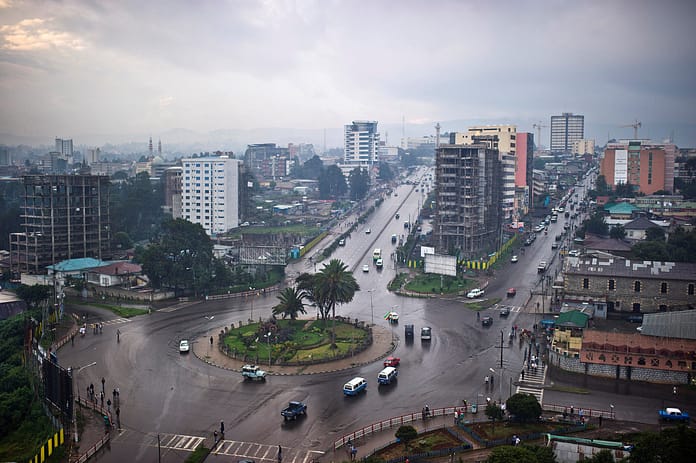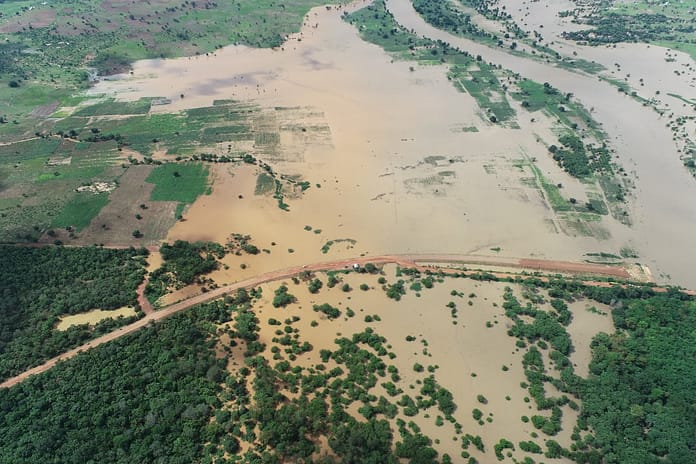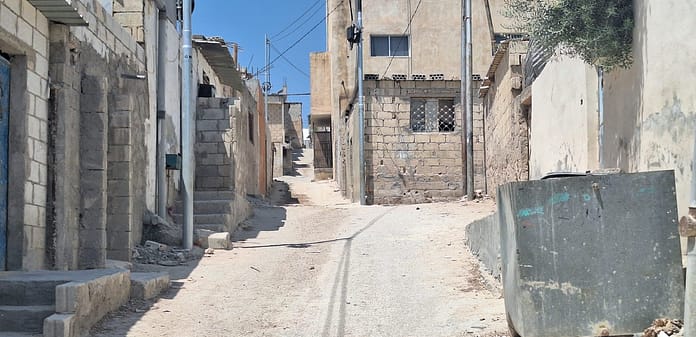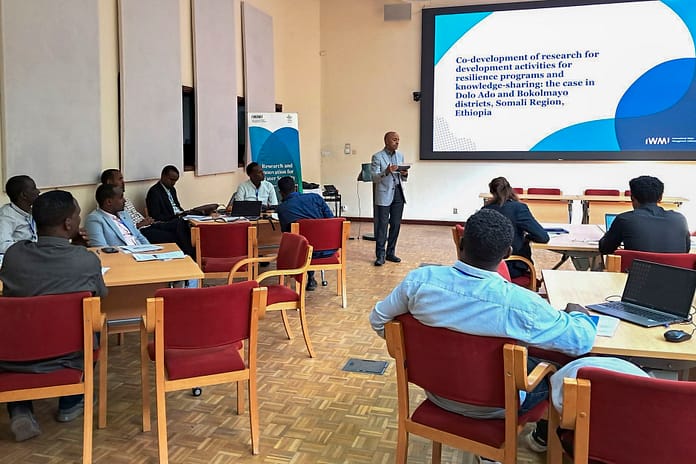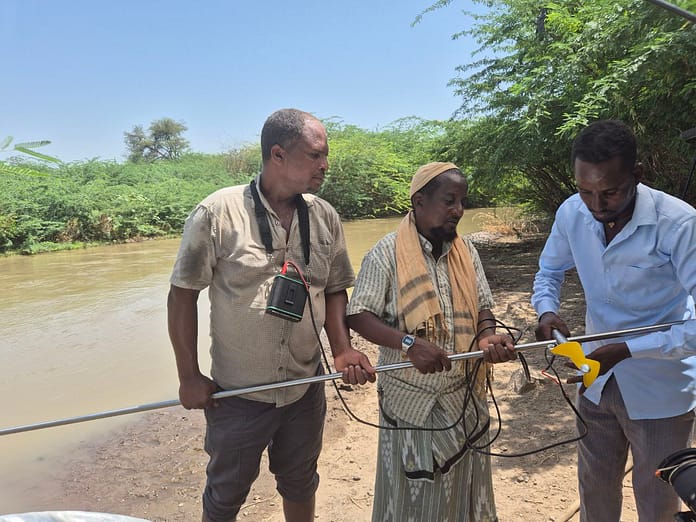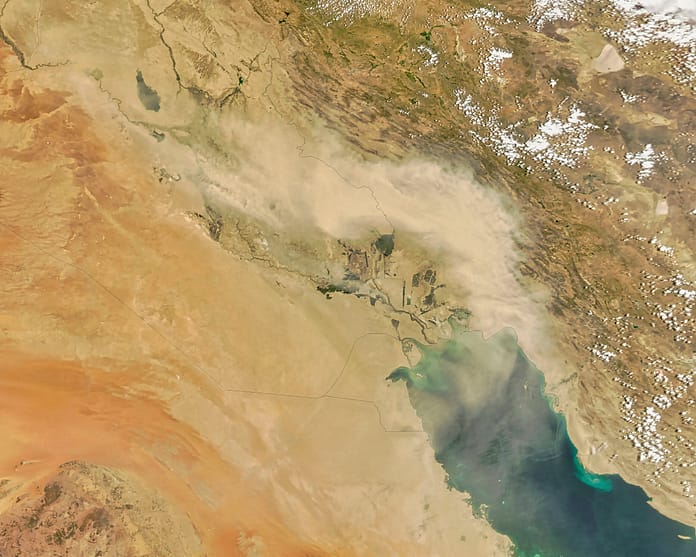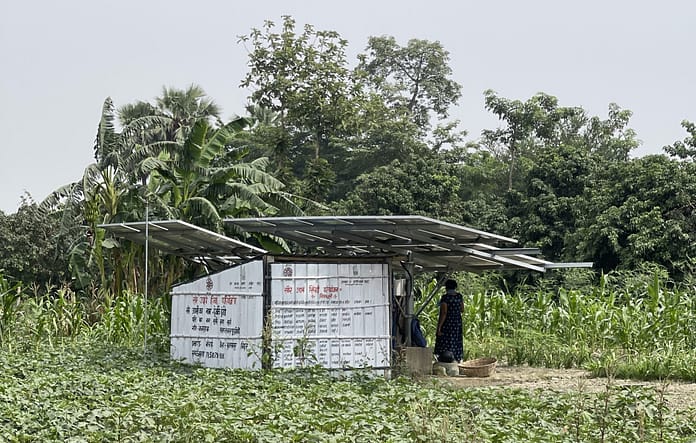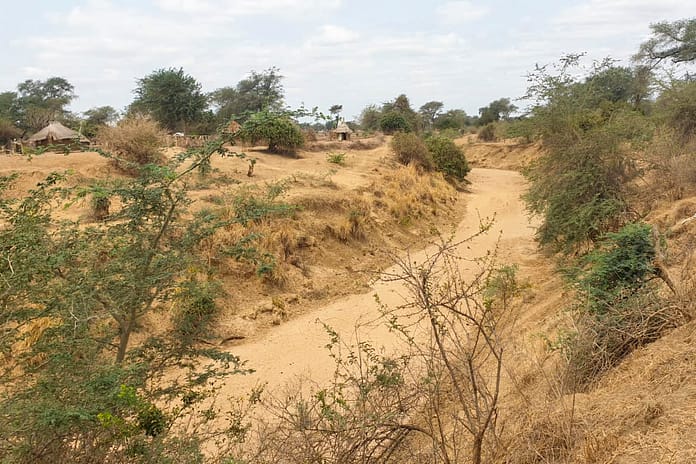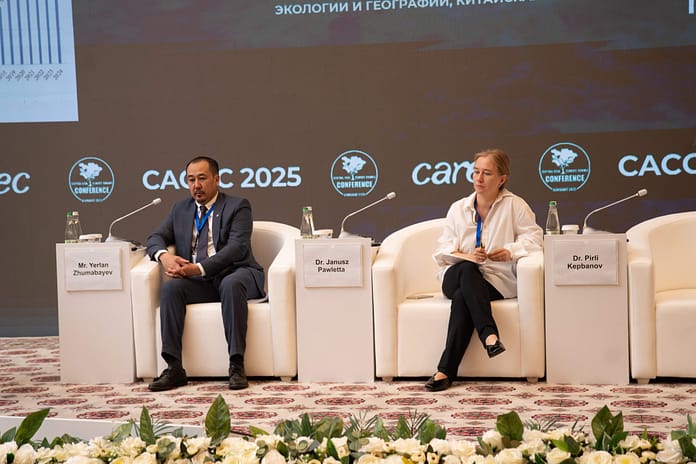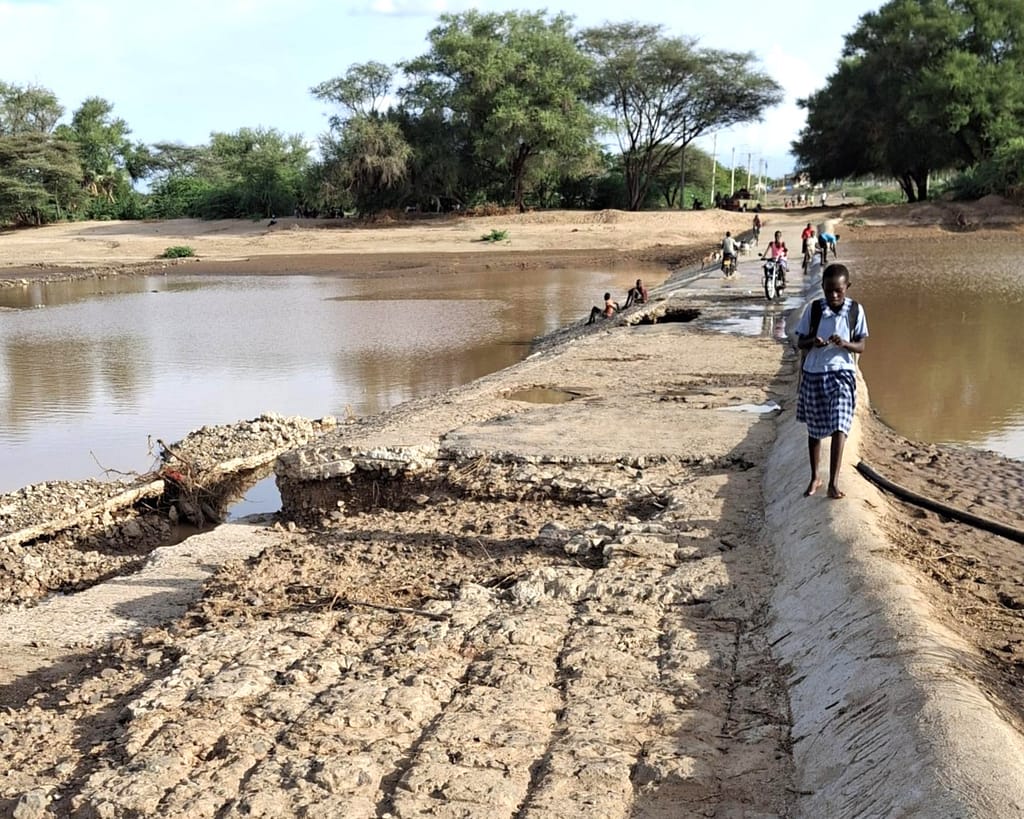
Turkana County in Kenya faces significant challenges due to its arid landscape, making it highly vulnerable to drought and other climate-related impacts. The effects of climate change are evident in the region through erratic rainfall patterns, extreme weather events, prolonged dry spells and rising temperatures. These climatic shifts severely disrupt local livelihoods.
In January 2025, the International Water Management Institute (IWMI), as a member of the Scientific Advisory Group for the Climate Information System (CIS-SAG), supported the County Government of Turkana to develop and launch its Climate Information System (CIS), the first of its kind in a county in Kenya. The aim of the CIS is to strengthen the climate resilience of communities in Turkana County by enhancing access to climate information, integrating indigenous knowledge in decision-making and promoting climate-resilient practices.
Since then, IWMI has been testing a flood detection and forecasting model for Kenya using machine learning and earth observation data, an essential innovation given the region’s lack of ground-based (in situ) data. By training a regression model on daily rainfall data from the Climate Hazards Group InfraRed Precipitation with Station data (CHIRPS) and using the amount of rainfall occurred in a specific month as a predictor, IWMI’s research team is now able to identify flood inundation areas through remote sensing images, specifically by analyzing the daily Normalized Difference Water Index from Aqua MODIS — Moderate Resolution Imaging Spectroradiometer — data.
In early March 2025, IWMI piloted the regression model in Lodwar town. Lodwar town is located downstream of the Turkwel river basin, a river that flows from Mount Elgon on the border of Kenya and Uganda to Lake Turkana, the only freshwater lake in the arid lands of Kenya. Usually dry and hot, the town is increasingly experiencing intense and sudden flooding. Water from surrounding highlands funnels into the area, leading to high flood risk, particularly near riverbanks.
During a workshop in May 2025, IWMI discussed the newly launched CIS with stakeholders in Lodwar town, validated the findings of the piloted flood forecasting model and gathered insights from communities in flood-prone areas. It was evident that the model produced promising initial results, with predicted flood zones closely aligning with hotspots identified by community members, particularly in areas near the Turkwel river and its confluence with the river Kawalasee.
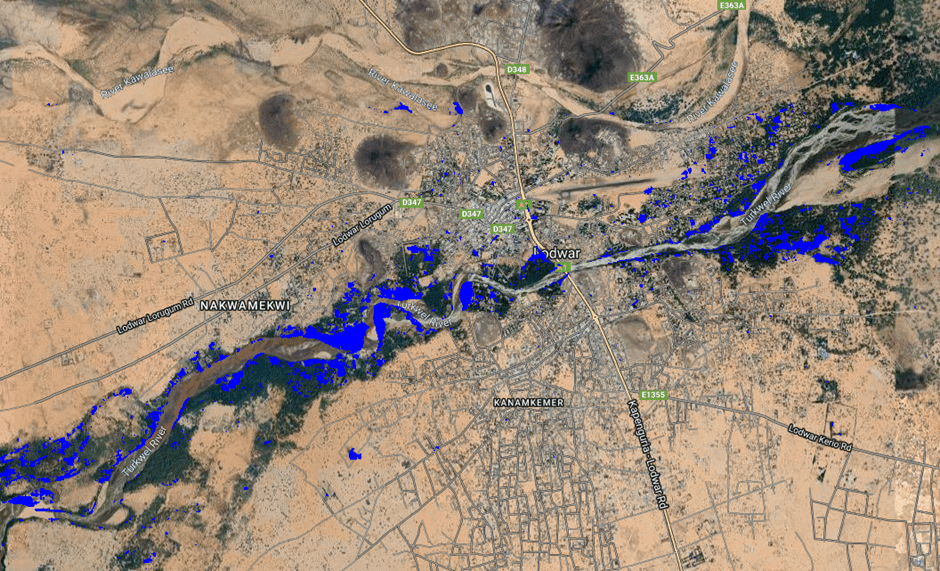
These interventions are part of the “Pan-African and Transdisciplinary Lens in the Margins: Tackling the Risks of Extreme Events” project, or PALM-TREES for short, an ambitious project of the CLARE programme, funded by UK Government’s Foreign, Commonwealth and Development Office and the Canadian International Development Research Centre (IDRC). With a transdisciplinary and Pan-African approach operating across six countries — Central African Republic, Democratic Republic of Congo, Ghana, Kenya, Nigeria and South Africa — the project aims to equip marginalized communities to better respond to extreme climatic events such as droughts, floods and heat waves, as well as to their interconnected and cascading socio-economic impacts.
In East Africa, IWMI is working to integrate the flood detection and forecasting model into the CIS to generate more accurate and timely early warning information related to riverine and flash floods in the future. Once the model is complete, IWMI will support its partners to build the capacity of key local stakeholders, such as the Kenya Meteorological Department, community leaders and technical experts.
IWMI researchers will also evaluate the benefits of the transdisciplinary research approach which is combining physical and social science with community perspectives to ensure its usefulness to both the communities affected by flooding and the experts who will rely on CIS information. This includes assessing how local communities perceive the information they receive. The perspectives of those directly impacted will help us understand the problem-solving potential of the research methodology and developed tools, ensuring that the solutions are relevant and practical.





